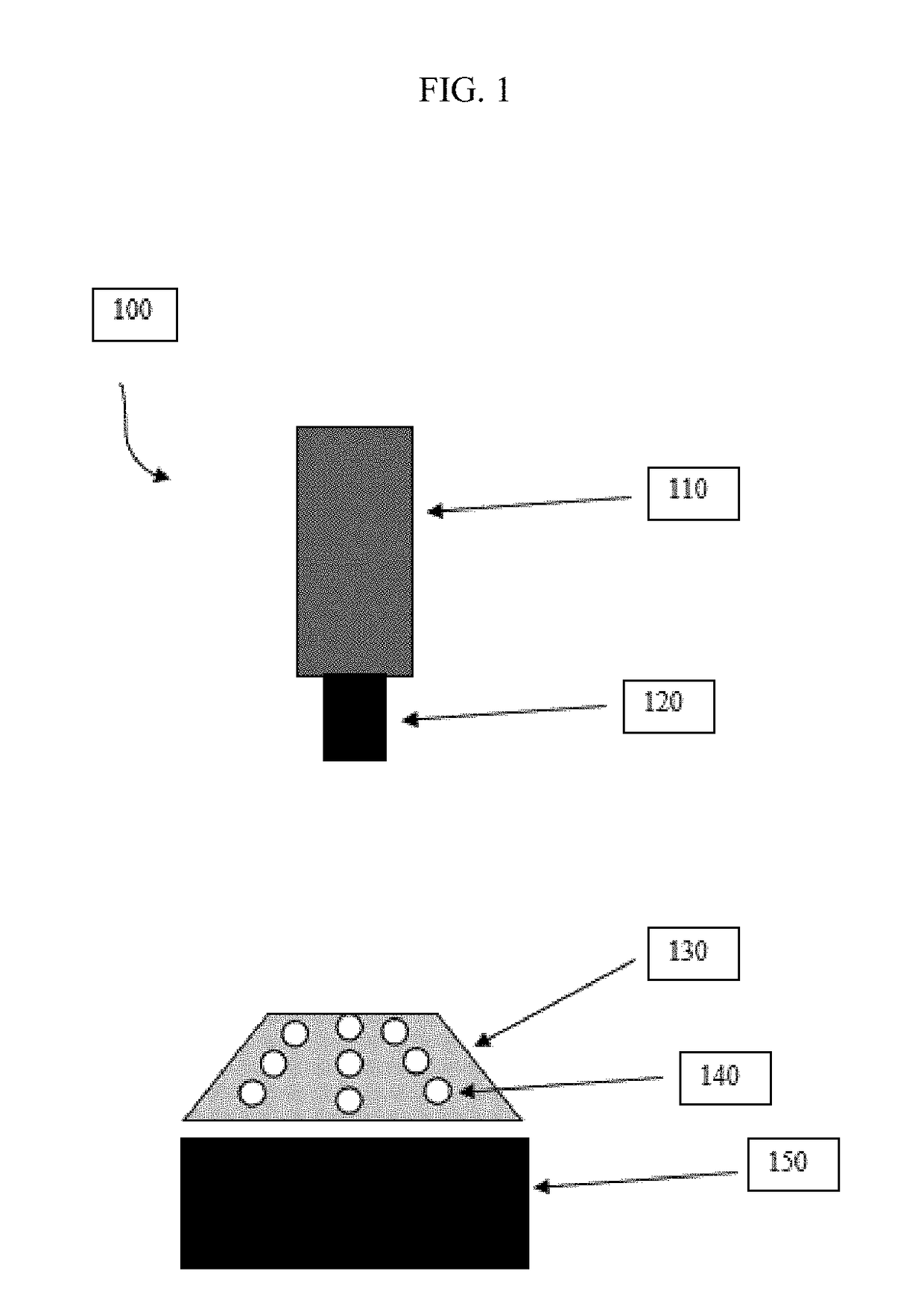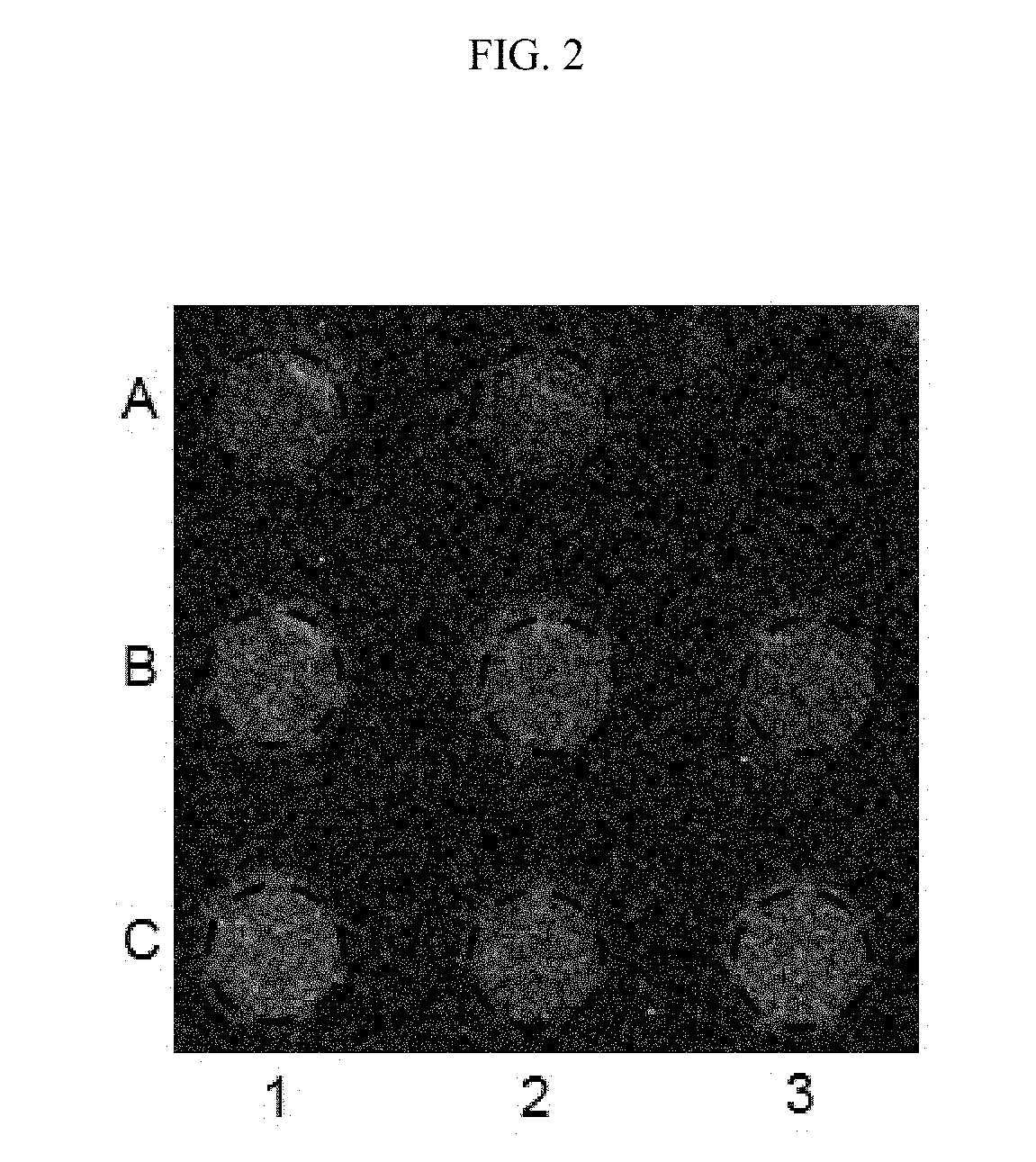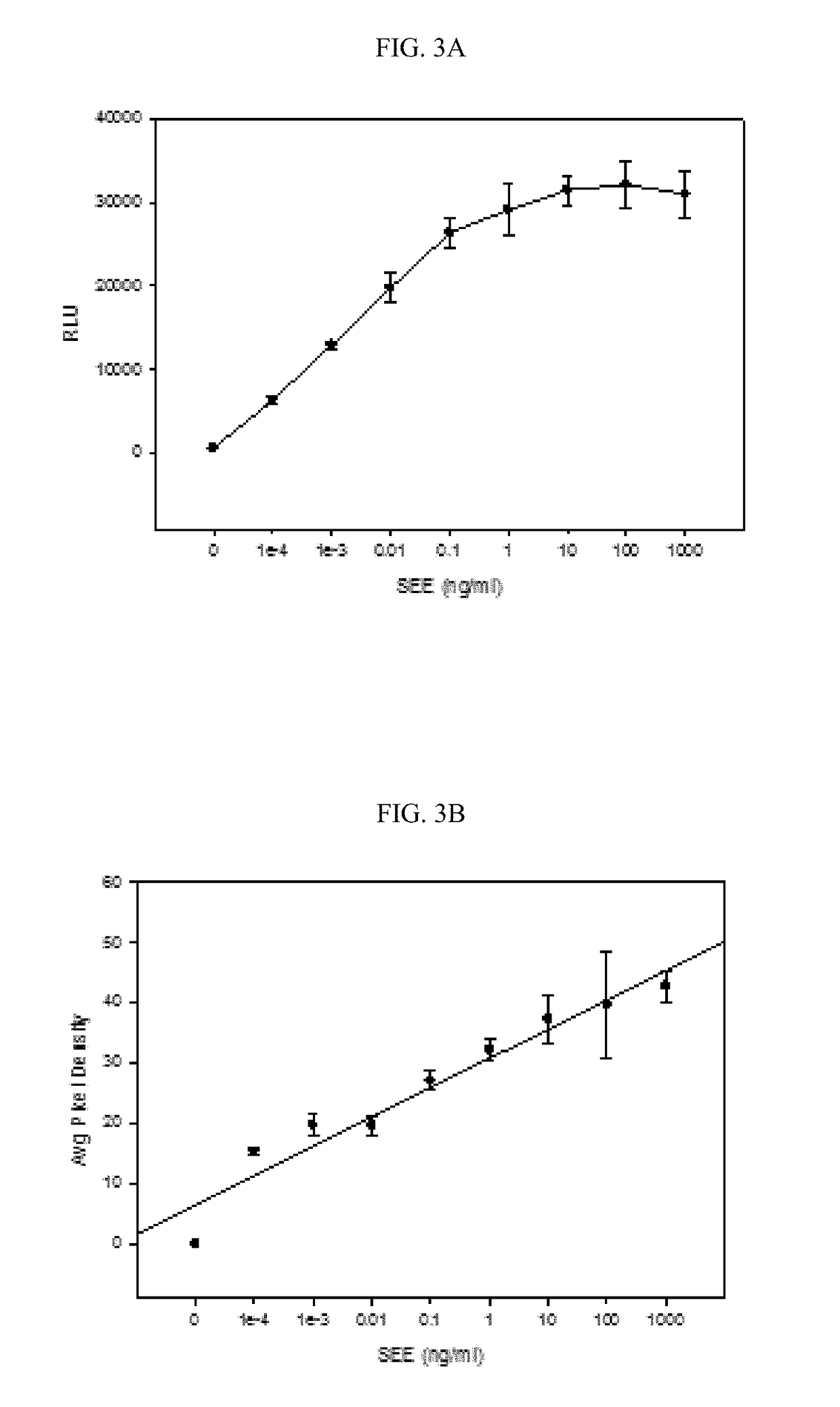Systems and methods for microbial toxin detection
a technology of microbial toxin and detection system, which is applied in the field of systems and methods for detecting the presence of microbial toxin, can solve the problems of reducing the detection efficiency of microbial toxin, so as to and reduce the risk of food poisoning
- Summary
- Abstract
- Description
- Claims
- Application Information
AI Technical Summary
Benefits of technology
Problems solved by technology
Method used
Image
Examples
example 1
Materials and Methods
[0052]Materials. Analysis plates having 9 wells and constructed of ⅛″ thick black poly(methyl methacrylate) (PMMA), thin polycarbonate sheeting, and double-sided adhesive transfer tape (available from 3M, under item #9770), were obtained from Piedmont Plastics, Inc., Beltsville, Md. The plates used in this example were constructed from the above materials using a laser cutter. The volume of each well was about 30 μL. The diameter and depth of the wells can be varied to suit the application. Also, conventional multi-well plates can be substituted. SEE toxin was purchased from Toxin Technology, Sarasota, Fla. Inactivated SEE was prepared by autoclaving the SEE toxin for 30 minutes at 121° C. Media reagents; RPMI 1640, fetal calf serum (FCS), MEM nonessential amino acids, sodium pyruvate, hygromycin B, and penicillin / streptomycin, were purchased from Gibco / Invitrogen, Carlsbad, Calif. Bio-Glo reagent was obtained from Promega Sunnyvale, Calif.
[0053]Cell Lines and C...
example 2
[0062]To measure the biological activities of SEE, a Jurkat T-cell reporter cell line in combination with Raji cells that perform the role of APC and present the SEE-MHC class II complex to the Jurkat T cell line was used. FIG. 7B shows that the light intensity is proportional to SEE concentration over an 8-log range with linear correlation R2=0.98. This result was compared with Murine splenocyte proliferation assay that required the sacrifice of live animals. In terms of sensitivity, this Jurkat cell line-based assay enables the detection of less than 100 fg / mL of biologically active SEE, an amount which is 104 times more sensitive than the proliferation bioassay at a detection limit of 10 ng / mL. This cell line assay of the invention is surprisingly sensitive, fast, simple, and inexpensive alternative to the ex vivo bioassay. An expected result would have been that because the splenocyte population contains a variety of antigen-presenting cells and a variety of T cells with differe...
example 3
[0063]In this example, the ability of the disclosed system to detect other type of microbial toxins using different cell lines was tested to compare a conventional plate reader versus the imaging device of the present invention. As a reporter construct, a CMV vector was constructed with the gene for firefly luciferase and a CMV-Luc promoter (details of the constructs and procedure are available in the following reference with the exception that the assay was adapted to analysis by using the present invention: Rasooly R, et al., 2013, Low Levels of Aflatoxin B1, Ricin, and Milk Enhance Recombinant Protein Production in Mammalian Cells. PLoS ONE 8(8): e71682. doi:10.1371 / journal.pone.0071682). Each cell line was transduced with the viral vector and incubated with the toxin for 3 days. Luciferase substrate was added to the cell suspension according to the Promega protocol and the luminescence analyzed as before. FIG. 8 shows results from non-haemolytic enterotoxin (Nhe) from the bacter...
PUM
| Property | Measurement | Unit |
|---|---|---|
| focal length | aaaaa | aaaaa |
| focal length | aaaaa | aaaaa |
| length | aaaaa | aaaaa |
Abstract
Description
Claims
Application Information
 Login to View More
Login to View More - R&D Engineer
- R&D Manager
- IP Professional
- Industry Leading Data Capabilities
- Powerful AI technology
- Patent DNA Extraction
Browse by: Latest US Patents, China's latest patents, Technical Efficacy Thesaurus, Application Domain, Technology Topic, Popular Technical Reports.
© 2024 PatSnap. All rights reserved.Legal|Privacy policy|Modern Slavery Act Transparency Statement|Sitemap|About US| Contact US: help@patsnap.com










